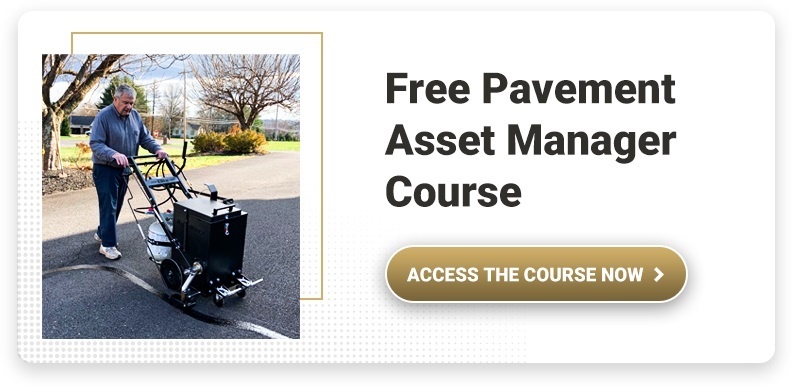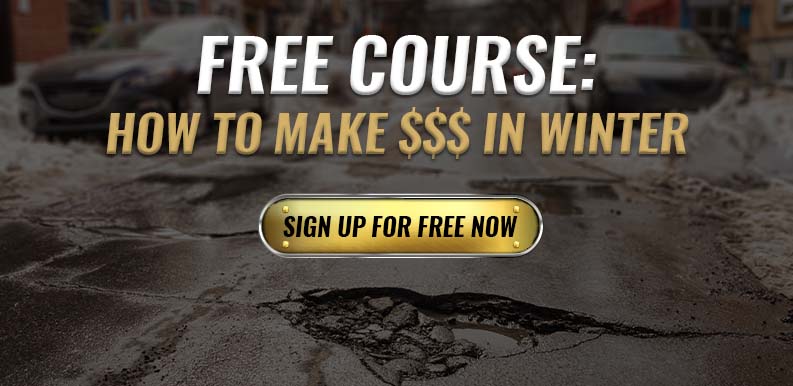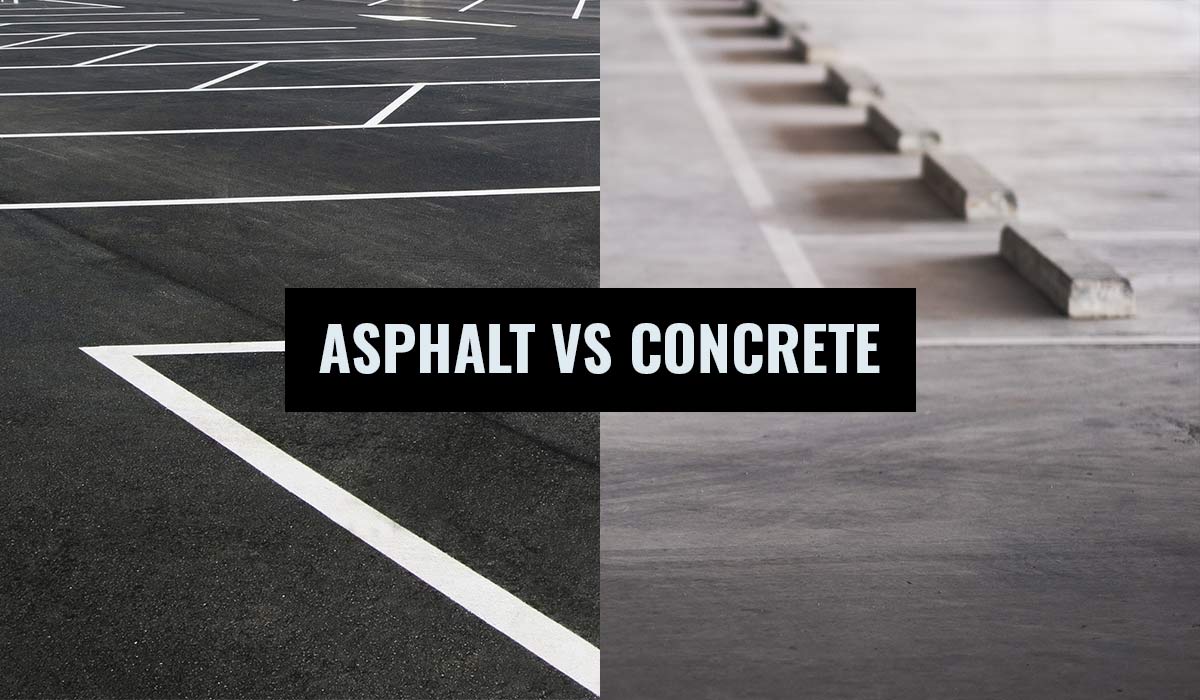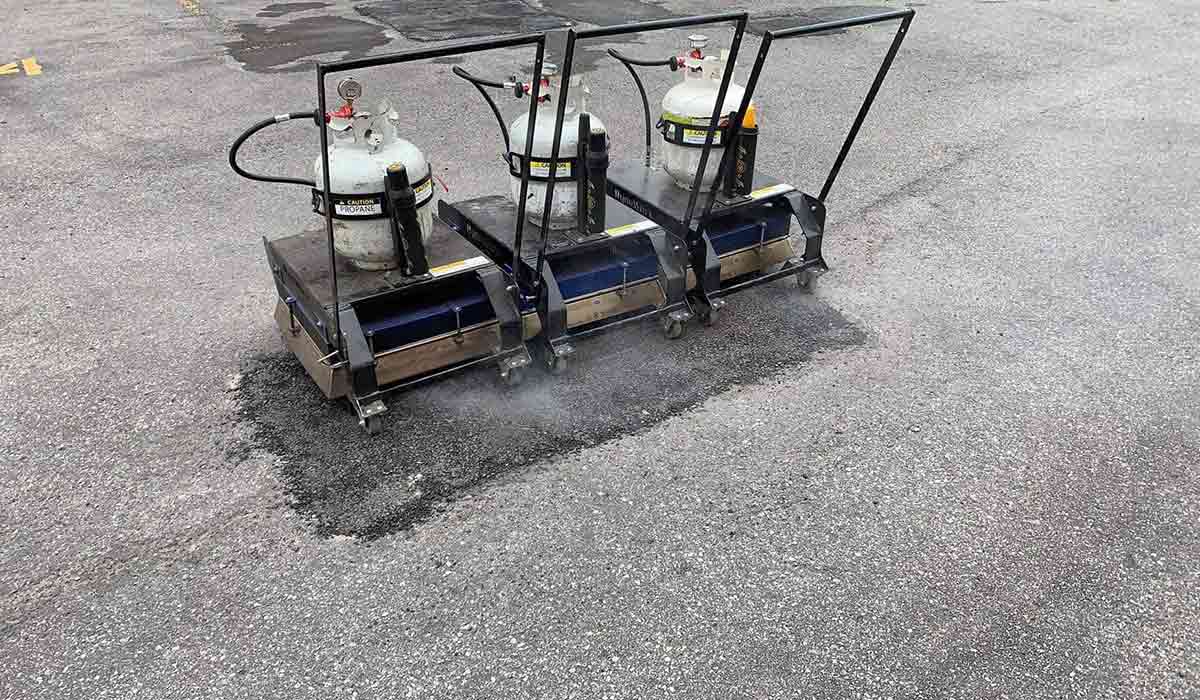As a business or property owner/manager, you always want to make sure that your premises are safe for your employees and your customers. So you ensure that your building follows the city's fire code, the elevators are always working, and that all tripping and fall hazards are eliminated.
Table of Contents
- Common Causes of Parking Lot Accidents
-
How To Prevent Parking Lot Accidents in Winter
- 1. Be proactive and repair cracks and potholes as soon as you spot them
- 2. Refresh your parking lot lines and signs
- 3. Apply deicer and clear the parking areas of snow when necessary
- 4. Protect your investment by sealcoating every two to three years
- 5. Have a maintenance plan ready for your parking lot
- Conclusion
But what about your parking lot? Are you proactively taking steps in reducing parking lot accidents during winter? If the answer is "I'm planning to," then this is for you.
In this blog, we're going to talk about how to prevent parking lot accidents in winter with the help of timely crack repair and asphalt sealcoating. We're also going to talk about the big part you can play to make sure that your customers are safe while navigating your property.
Common Causes of Parking Lot Accidents
There are several causes of parking lot accidents during winter. Here are some of them:
- Potholes/depressions in the asphalt
- Deep cracks
- Line striping that is not visible
- Damaged drainages and manholes
- Lack of parking lot signs
- Distracted driving
- Speeding drivers
When it comes to distracted and reckless driving, there's not much you can do about these except hope that the people that use your parking lot are conscientious enough to do the right thing.
But the good news is there's plenty you can do when it comes to fixing potholes, cracks, and other damages on asphalt. Here are some actionable steps you can carry out to avoid accidents from happening in your parking lot.
How To Prevent Parking Lot Accidents in Winter
1. Be proactive and repair cracks and potholes as soon as you spot them
It always pays to take a proactive approach when it comes to eliminating or even reducing parking lot accidents during winter.
You have two choices when it comes to asphalt repair: you either hire a contractor to do the job or do it yourself.
Hiring a contractor is a fairly hassle-free way of repairing your pavement asset and reducing parking lot accidents during winter. It's also cheaper at the onset because you don't have to purchase asphalt repair equipment and supplies. Plus, you don't need to freeze your butt off in the bitter cold while doing repairs.
But on the flip side, there are some pros to conducting DIY parking lot repairs. First, you can conduct asphalt repairs anytime you want, and yes, even during winter. Your schedule is not tied up to the contractor's, and you can even repair your parking lot at night when customers are not using it.
Sure, the cost of investing in asphalt repair equipment and supplies can be pretty steep at first. But the great thing is that investing in asphalt maintenance equipment pays for itself in the long run.
If you're looking for resources on how to conduct DIY crack repair or how to repair potholes, then look no further. Check out our brief guide on DIY parking lot crack repair, as well as our easy-to-follow pothole repair guide.
If you're also planning to repair potholes this year (yes, even in the middle of winter), then we recommend that you use the Mini Infrared Asphalt Heater. Check this out to learn more about this groundbreaking machine.
2. Refresh your parking lot lines and signs
Faded or non-existent parking lot signs can make it hard for your customers to navigate the premises and can be the cause accidents. So it's imperative to refresh your parking lot lines with a fresh coat of paint regularly, as well as paint handicap and other parking lot signs.
Keep in mind, though, that you need to paint parking lot lines and signs in spring and summer to take advantage of the warm weather and give the paint plenty of time to dry.
3. Apply deicer and clear the parking areas of snow when necessary
Neglecting snow and ice removal is a surefire way to get your customers in an accident. Ice, for example, turns the pavement slippery, while several inches of snow after a bad blizzard can block motorists from entering or leaving your parking lot.
So to prevent mishaps in your property, we recommend that you apply some high-quality, asphalt-friendly liquid ice melter to the pavement.
There are other options, too. Some property owners sprinkle sand to prevent cars from slipping. Others use rock salt to melt ice quickly, as well as to prevent it from reforming.
So which is better? Both sand and rock salt are effective and affordable options for commercial property owners. But be judicious when using salt especially if your parking lot is marked with cracks and has not been seal coated for some time.
Salt, you see, is a corrosive compound. It slowly eats away at anything it can get into, including some metals and yes, even asphalt if it has not been sealed properly.
Another problem with using salt and sand is that your customers can track them inside your shop or office when they come in. Sand tracked in can get your floors dirty and muddy, while salt, if neglected, can also corrode concrete in the long run.
Salt and sand are not the only options, though. If you're looking for alternatives on how to keep your parking lot safe this season, then you can also use other types of deicers or a shovel.
You can also invest in a snowplow, snow thrower, or snow blower if you have the budget.
4. Protect your investment by sealcoating every two to three years
Again, when it comes to parking lot maintenance, it pays to be proactive. Before winter blows in, make sure that your parking lot is crack-free and sealcoated down to the last inch.
But what can sealcoating do for your asphalt pavement exactly? Let me explain.
Asphalt sealer serves as a protective coating for your pavement. It prevents water from seeping into the cracks during the freeze-thaw cycle this winter, as well as when it rains during the rest of the year. This prevents cracks from expanding, keeps the foundation intact, and prevents potholes from forming.
5. Have a maintenance plan ready for your parking lot
It's a cliché, but the adage "if you fail to plan, you plan to fail" rings true when it comes to parking lot maintenance. So we recommend that you have a parking lot maintenance plan in place to make sure that your property is damage-free and safe to use no matter the season.
And we're not talking about a plan that you implement for months or even one or two years. This is a multi-year maintenance plan that can span up to ten years or more.
If you want to learn how to create a multi-year parking lot maintenance plan, then contact your local sealcoating contractor. You can also give us a call at 1-866-399-5562 for some free expert advice on how to create yours.
Conclusion
So there you have it, your comprehensive guide on how to keep your asphalt parking lot safe this winter. Simply follow these steps to prevent costly accidents from happening on your watch.
Whether you manage a hotel or a golf course, it's always good practice to prioritize your pavement asset to prevent parking lot accidents in winter. Read our case studies to see how property owners and facility managers are winning by maintaining their parking lots and protecting their customers.
You can also read our blog or check out the Asphalt Kingdom YouTube channel for more helpful tips on how to keep your parking lot safe no matter the season. Or you can reach out to us for free expert advice on sealcoating, crack repair, and pothole repair.








